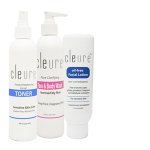Cold Light Laser Therapy
Despite the fact that cold light laser therapy has been widely used outside of the United States for over 30 years to treat a number of different maladies, it is still regarded in the U.S. as an experimental procedure that should only be used for research purposes.
The FDA has made it clear they would like to see a lot more research studies conducted on the benefits of cold therapy before placing their stamp of approval on it.
What is Cold Therapy?
It's a process by which low intensity lasers are focused on a certain area of the body in an effort to reduce swelling or pain, heal wounds, or reduce the appearance of scars and wrinkles. It's also been used to encourage hair growth in place of chemical processes.
Treatment consists of using various wavelengths of the laser, different exposure times, and varying intensity, depending on the area of the body being treated.
It's also said to be beneficial for repairing the top layer and deeper layers of skin tissue by using a pulsating or concentrated laser light over the damaged areas.
Who Could Benefit From Cold Therapy?
Marketed outside the U.S., cold therapy is recommended to anyone suffering from hair loss, severe acne scarring, arthritis, varicose veins, wrinkles, migraine headaches, cold sores, tendonitis, carpal tunnel, high blood pressure, skin irritation, fibromyalgia, and even fractures.
Acupuncture with lasers is offered in some countries for those people who have an aversion to needles. Cold therapy is also being explored as a possible treatment for macular degeneration.
It's also referred to as an anti-aging treatment, promising to take years off your appearance. Who wouldn't want that? But it's always a good idea to weigh both the advantages and disadvantages of any medical procedure prior to making any treatment decisions.
Cold Light Laser Therapy as a Skin Treatment
Naturally, as we get older, our skin can reflect our age. Cold laser therapy, when applied to the top skin layers tells skin cells to rejuvenate and produce cellular energy. The result is that the skin has fewer wrinkles, looks more youthful and smooth and has a healthy glow.
Countries outside the U.S. have utilized this method of laser therapy to reduce the appearance of varicose veins, deep facial wrinkles, acne scars, scars from eczema, burn scars, and even reduce the appearance of fatty cellulite deposits on legs, arms, and buttocks.
Benefits of Cold Laser Therapy
- Non-invasive
- Minimal, if any, side effects
- Preferred by many over chemical procedures
- Out-patient procedure
- Reduces inflammation and pain
- Could eliminate unsightly scars, wrinkles, and more
Dangers of Cold Therapy
Your sight could be damaged if you are not wearing the proper safety glasses during the laser treatment. It's important that both the patient receiving the treatment and the physician administering the therapy are wearing safety glasses.
Early research, though no thorough research has been completed, indicates that it is possible that cancer cells or tumors could increase in size and intensity as a result of the laser passing over them.
In addition, a laser should not be used to treat or focus on the thyroid or passed over the soft spots of an infants' skull.
Patients taking certain prescription drugs could be at risk as well and shouldn't undergo laser therapy.
We should mention that none of these risks have been definitively proven, but are still recommended as precautions when considering cold therapy.
Conclusions About Cold Light Laser Therapy
More studies are being conducted on the benefits and potential risks of cold laser therapy in the United States. The few studies that have been done on laser therapy have focused mostly on results from heat therapy rather than cold therapy.
It's vital to have larger research studies conducted and completed on this type of therapy to determine whether or not it is truly beneficial or if it's simply too risky.
The FDA has not yet put its stamp of approval on cold therapy in the United States, but it hasn't been outlawed either. It should be understood that if you are considering cold therapy, you're doing so at your own risk.
Always do research before discussing cold light laser therapy with your physician so you know which questions to ask during your appointment.
Home > Scarring Healing > Cold Light Laser Therapy









New! Comments
Share your thoughts about what you just read! Leave me a comment in the box below.